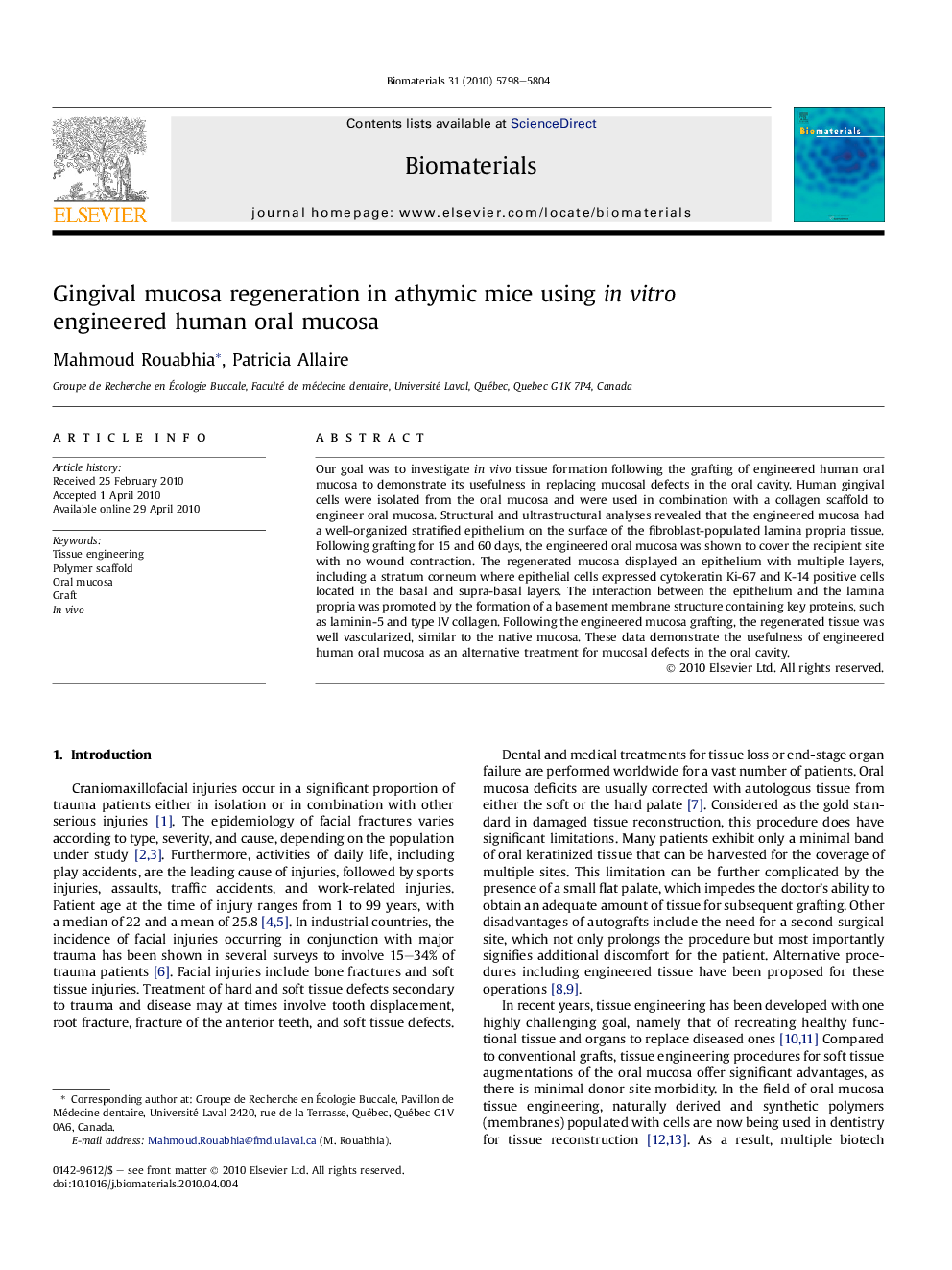| Article ID | Journal | Published Year | Pages | File Type |
|---|---|---|---|---|
| 8186 | Biomaterials | 2010 | 7 Pages |
Our goal was to investigate in vivo tissue formation following the grafting of engineered human oral mucosa to demonstrate its usefulness in replacing mucosal defects in the oral cavity. Human gingival cells were isolated from the oral mucosa and were used in combination with a collagen scaffold to engineer oral mucosa. Structural and ultrastructural analyses revealed that the engineered mucosa had a well-organized stratified epithelium on the surface of the fibroblast-populated lamina propria tissue. Following grafting for 15 and 60 days, the engineered oral mucosa was shown to cover the recipient site with no wound contraction. The regenerated mucosa displayed an epithelium with multiple layers, including a stratum corneum where epithelial cells expressed cytokeratin Ki-67 and K-14 positive cells located in the basal and supra-basal layers. The interaction between the epithelium and the lamina propria was promoted by the formation of a basement membrane structure containing key proteins, such as laminin-5 and type IV collagen. Following the engineered mucosa grafting, the regenerated tissue was well vascularized, similar to the native mucosa. These data demonstrate the usefulness of engineered human oral mucosa as an alternative treatment for mucosal defects in the oral cavity.
